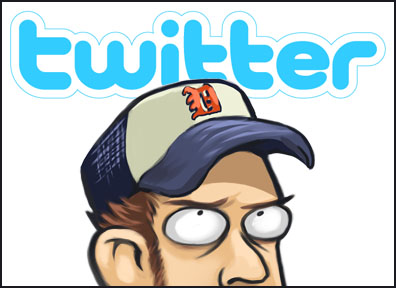In the last 6 months, we’ve received a lot of questions about a micro-blogging service called Twitter. If you’ve not heard of Twitter yet, I am sure you will soon.
 The service is similar to social networking sites like Facebook or MySpace, except the posts are limited to 140 characters. It is estimated that Twitter now has more than five million users.
The service is similar to social networking sites like Facebook or MySpace, except the posts are limited to 140 characters. It is estimated that Twitter now has more than five million users.
One of the big differences between Twitter and the common social networks is a powerful search engine that allows users to mine others’ postings for useful information. It takes on some Google-like characteristics in that sense. In addition, Twitter can be easily accessed on a cell phone or mobile device due to its simplicity.
We’re not quite sure how a service like Twitter could assist in recruiting and coaching. There are definitely some companies trying to figure this out (ex. www.tweetmyjob.com ). Nonetheless, there are some signs that it may play a significant role in how information is collected and used.
One of these signs is the development of a “language” around the use of the tool. Dominant companies and concepts in our culture tend to figure out a way to control the language. For example, we now “Google” something on the internet. If you need some information on a topic, you pull up Wikipedia. How many people knew what “wiki” meant before Wikipedia?
Twitter users have gone overboard on this concept. There is a whole language developing around the use of Twitter. Here is an abridged glossary found in Business Week:
At Reply, or “@reply”: A direct tweet sent to another Twitter user.
Hash Tag: The “#” sign. Allows Twitter users to group tweets by topic, making it easier to search particular conversations using Twitter Search.
Link: Including a URL in your tweet.
MisTweet: A tweet one later regrets.
ReTweet: To re-post something that’s already in the Twitter stream. Usually preceeded by “RT” and “@[username],” to give credit to the original poster.
SnapTweet: A tweet that includes a photo taken with a cell phone, uploaded to Flickr and posted to Twitter via snaptweet.com.
Twadd: To add someone as a friend or follower.
Twaigslist/Twebay: To sell something on Twitter.
Tweeter/Twitterer: Someone who uses Twitter.
TwinkedIn: Inviting friends made on Twitter to connect on LinkedIn.
Twittectomy: To remove someone from the list of people you follow.
Twitterati: The A-list twitterers everyone follows.
Twitterfly: Twitter’s version of a social butterfly, marked by the extreme use of @ signs.
Twitterlooing: Twittering from the bathroom.
Twitterpated: Overwhelmed with Twitter messages.
Twittfeinated, Twigged Out, Twired: To be so hyped up on twittering that you cannot sleep
So, are you up for the new realities of a Twitter-infested world? On the surface, it seems like Twitter is just another path to “Twittcrastination.” Perhaps I just do not understand the possibilities yet…

